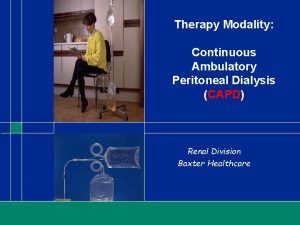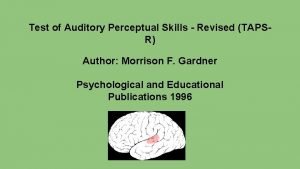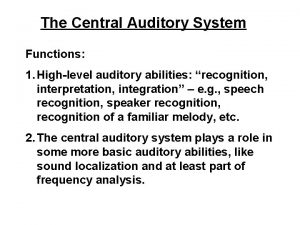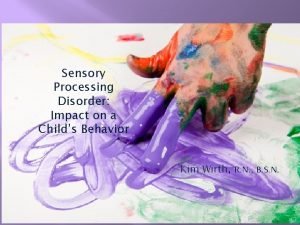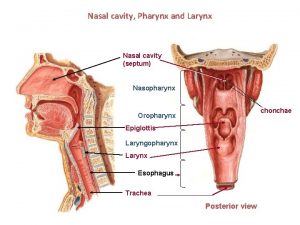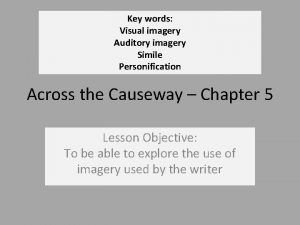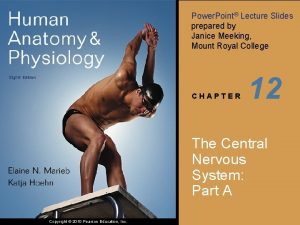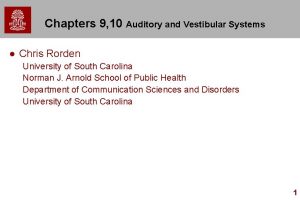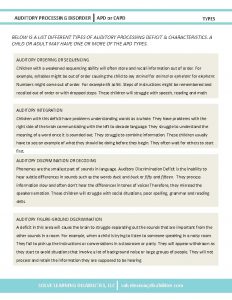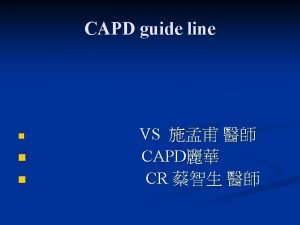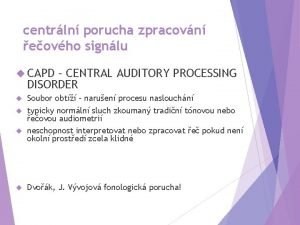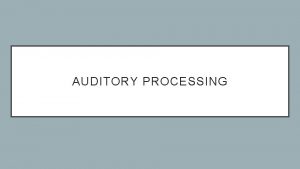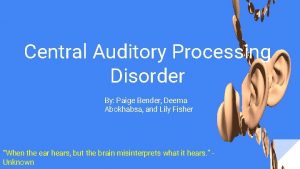Central Auditory Processing Disorder CAPD Central Auditory Processing












- Slides: 12

Central Auditory Processing Disorder (CAPD)

Central Auditory Processing Disorder (CAPD) http: //hark. ie/helping-children/auditory-processing-disorder-apd/ A disorder that causes students to have difficulty understanding what they are hearing in the classroom.

Central Auditory Processing Disorder (CAPD) It particularly becomes a problem if there is any background noise in the classroom. This isn’t thought to be a problem with hearing, but rather with the processing of the information.

Central Auditory Processing Disorder (CAPD) What’s it like?

Central Auditory Processing Disorder (CAPD) What’s it like? It seems to be the same for most people.

Central Auditory Processing Disorder (CAPD) Speech seems fast, fragmented and confusing. Voices lack tonality. Directional hearing is poor and voices from behind are particularly difficult to hear. It’s very difficult to distinguish a voice from any other sound that is present, for example, if the refrigerator switches on (a sound barely noticeable to most people) it seems to swamp anyone speaking.


Help the Student to Prepare for Class by: Giving them your notes a few days before class. Giving them labs a few days before the lab (if possible). Explaining the key words first before they are used when discussing that topic in class.

Help the Student in the Class by: Using images and diagrams where possible. Repeating and rephrasing key points throughout the class. Making sure the student is seated near the lecturer and away from noises (e. g. the door or the windows). Speaking clearly and using gestures to emphasise key points.

Help the Student in Tests and Assignments by: Making sure they are working in a quiet area. Not penalizing them for spelling errors. Breaking down tests and assignments into small parts (using new paragraphs and bullet points to break things up). Providing them with extended time for testing.

Direction Following +Out Loud http: //bungalowsoftware. com/directions. htm

Thanks !!! Please contact me if you have any comments or suggestions: Damian. Gordon@dit. ie
 Capd exchange procedure
Capd exchange procedure Tanda jangkitan kuman capd
Tanda jangkitan kuman capd Malingering disorder
Malingering disorder Test of auditory processing skills 3 subtest descriptions
Test of auditory processing skills 3 subtest descriptions Central auditory nervous system
Central auditory nervous system Sensory processing disorder dsm
Sensory processing disorder dsm Sensory processing disorder dsm
Sensory processing disorder dsm Bronchiole
Bronchiole Function of auditory system
Function of auditory system Auditory imagery words
Auditory imagery words Auditory association area location
Auditory association area location Auditory sensory
Auditory sensory Auditory
Auditory
